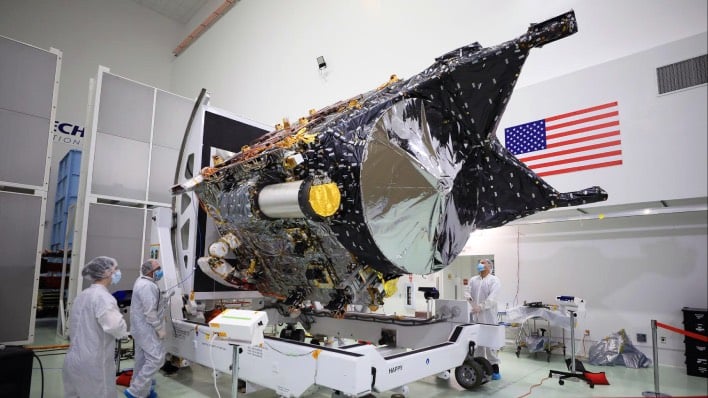NASA Caught A Laser-Beamed Message Sent To Earth From 10 Million Miles Away

During its journey to the main asteroid belt between Mars and Jupiter, the Psyche spacecraft has DSOC onboard and configures it to send high-bandwidth test data to Earth. The two-year technology demonstration achieved what NASA deems as “first light” after its flight laser transceiver connected with an uplink laser beacon transmitted from the Optical Communications Telescope Laboratory in California. DSOC is NASA’s first demonstration of optical communications beyond the Earth-Moon system.
“Achieving first light is one of many critical DSOC milestones in the coming months, paving the way toward higher-data-rate communications capable of sending scientific information, high-definition imagery, and streaming video in support of humanity’s next giant leap: sending humans to Mars,” remarked Trudy Kortes, director of Technology Demonstrations for the Space Technology Mission Directorate at NASA’s Headquarters in Washington.
As radio frequency communications from deep space are reaching their bandwidth capacity, the need for an upgraded communications system is required. Future missions, such as the upcoming Artemis missions, are expected to transmit enormous volumes of science data that will push the boundaries of currently used communication technology.
“Tuesday morning’s test was the first to fully incorporate the ground assets and flight transceiver, requiring the DSOC and Psyche operations teams to work in tandem,” explained Meera Srinivasan, operations lead for DSOC. “It was a formidable challenge, and we have a lot more work to do, but for a short time, we were able to transmit, receive, and decode some data.”
Now that the DSOC team has achieved first light, it will proceed with refining the systems that control the pointing of the downlink laser aboard the transceiver. Once achieved, the project can move forward by demonstrating its ability to maintain high-bandwidth data transmission from the transceiver to Palomar at various distances from Earth.
The DSOC experiment looks to show data transmission rates 10 to 100 times greater than state-of-the-art used by spacecraft currently. Near-infrared light packages data into significantly tighter waves than radio waves. This enables ground stations to receive more data, and will help future missions to support higher-resolution science instruments.
While achieving first light with the DSOC experiment is an astounding achievement, the team understands it is only the first undertaking of the complicated mission. At Psyche’s farthest distance from Earth, DSOC’s near-infrared photons will take nearly 20 minutes to travel back, compared to the 50 seconds it took with the first light achievement.

